Forest Park's Pagoda Circle and Nathan Frank Bandstand
Introduction
Text-to-speech Audio
Located on a small island within Pagoda Lake, the original wooden bandstand that existed at this site was built for the grand opening of Forest Park in 1876. Designed in a Syrian style, it soon became one of the park's most photographed structures, as spectators gathered around the lake to listen to musical concerts during the 1904 World's Fair. In 1911, however, the pagoda was damaged in a storm and then lost to a fire. It was not until the early 1920s, when the St. Louis philanthropist Nathan Frank donated $50,000, that a new bandstand could be constructed on the picturesque island known as Pagoda Circle. Designed in the Renaissance Revival style by Heffensteller, Hirsch, and Watson, this new pagoda was built from white marble and concrete, with a copper roof and bronze railings. Although it remains accessible only by boat, it is still one of the most popular and recognizable landmarks in Forest Park.
Images
Close-up of the Pagoda Circle and Nathan Frank Bandstand
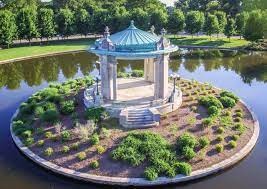
Pagoda Circle and Nathan Frank Bandstand in Forest Park
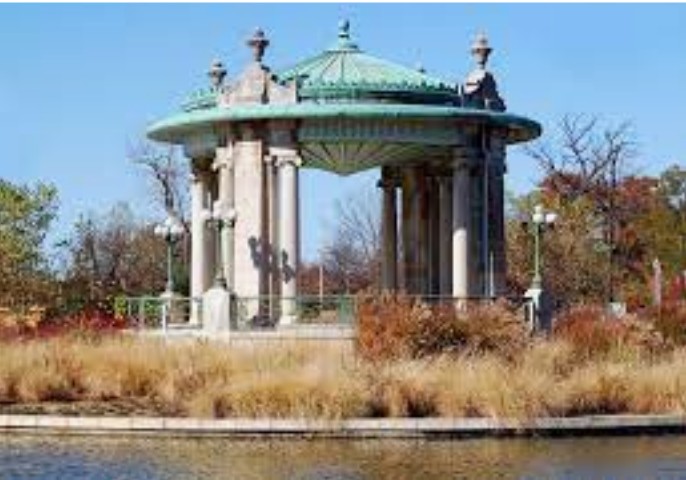
The bandstand is surrounded by a moat known as Pagoda Lake.
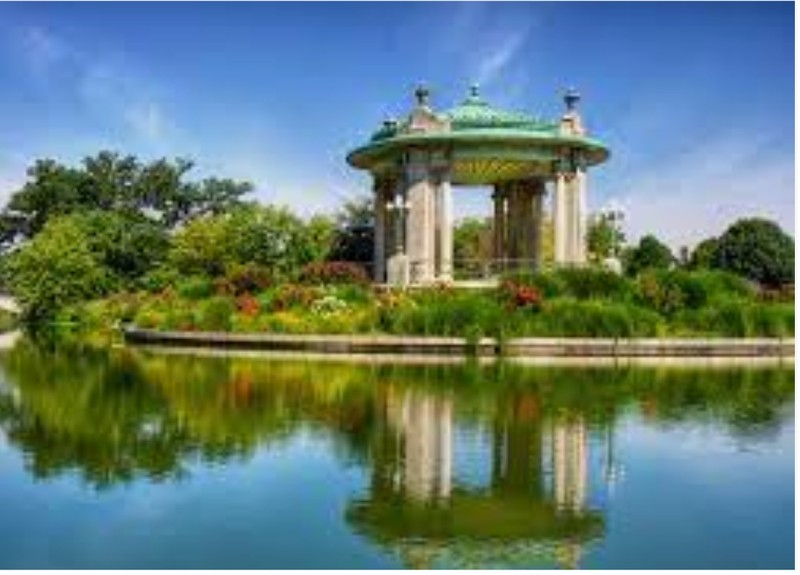
Pagoda Circle and the Nathan Frank Bandstand in autumn
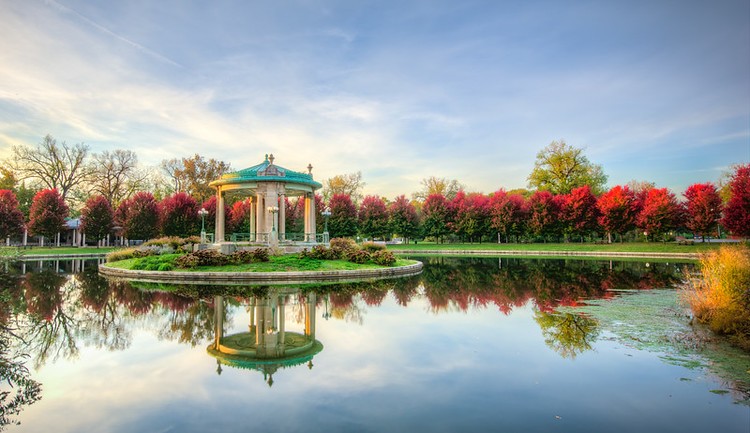
A historical marker in Forest Park describes the original wooden pagoda bandstand, which was lost to a storm and fire.
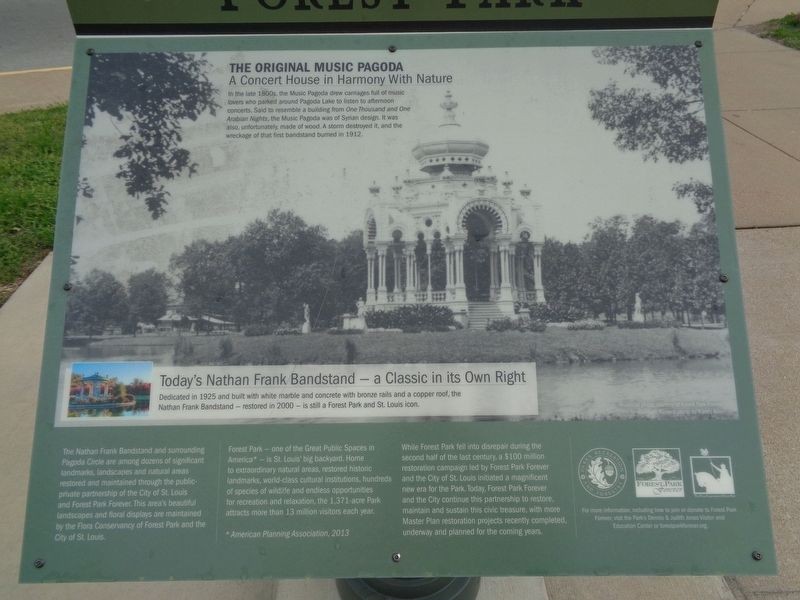
Postcard showing the original bandstand (Lithograph, printed circa 1907 - 1915)
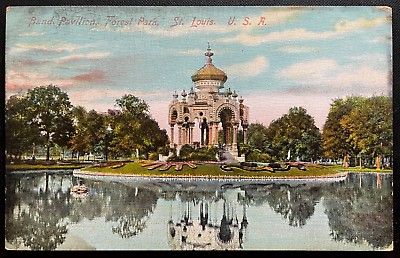
The original bandstand was destroyed by a storm and then a fire. It was over a decade before a new bandstand could be built.
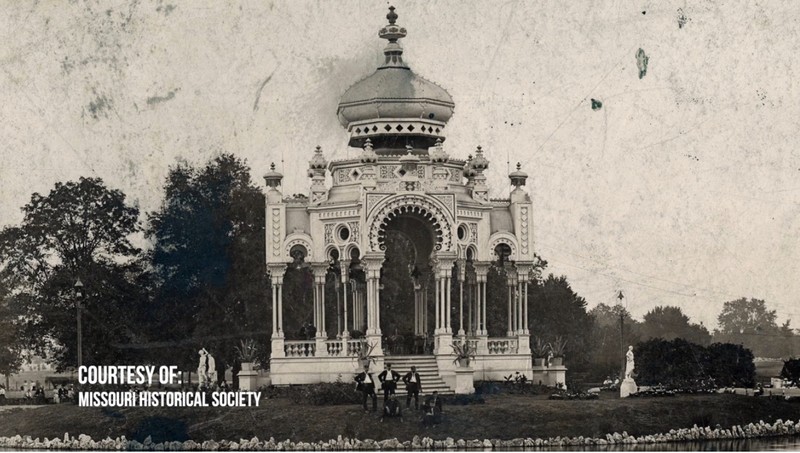
The original bandstand was built in 1876 for the opening of Forest Park. It featured a Syrian architectural design and decorative elements.
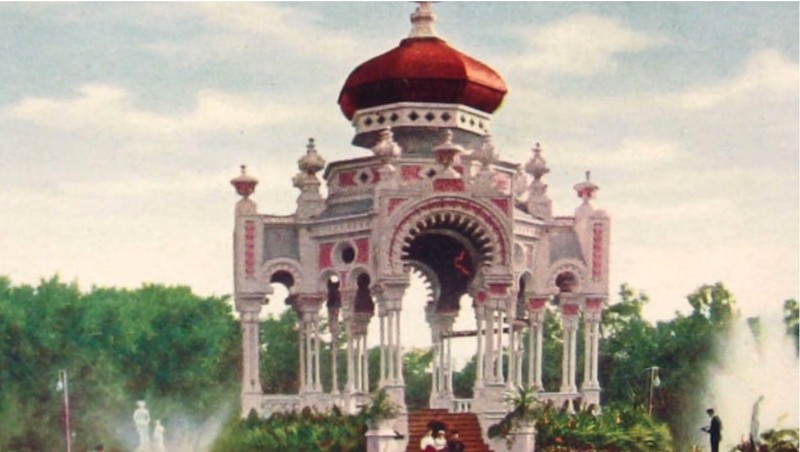
Postcard showing the original bandstand, known as the Pagoda in Forest Park
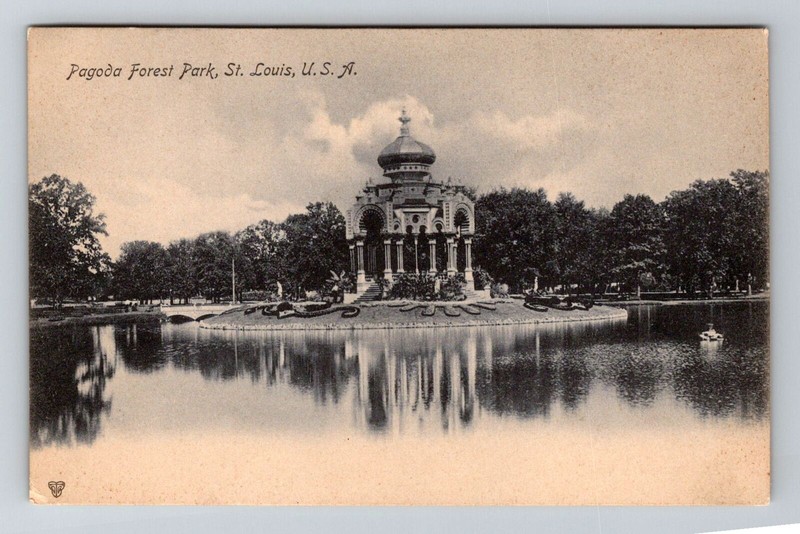
Postcard showing the original bandstand, known as the Pagoda in Forest Park
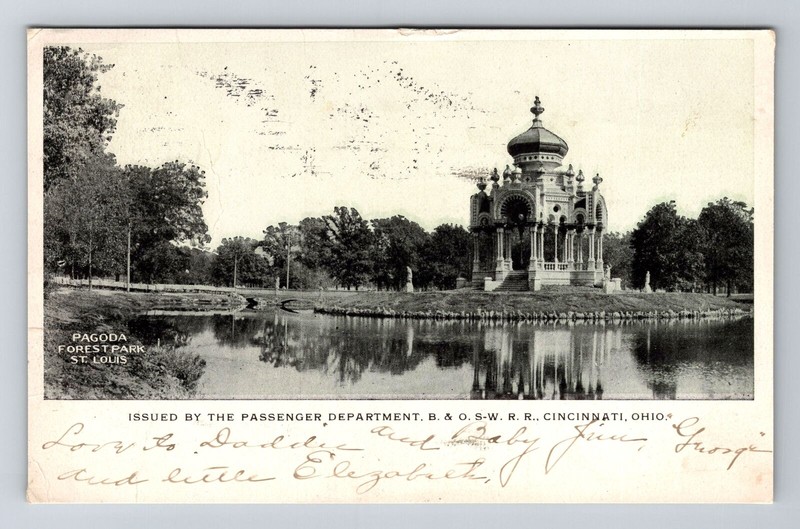
Funds for the new bandstand were donated by Nathan Frank, an attorney, businessman, U.S. congress member, and civic philanthropist
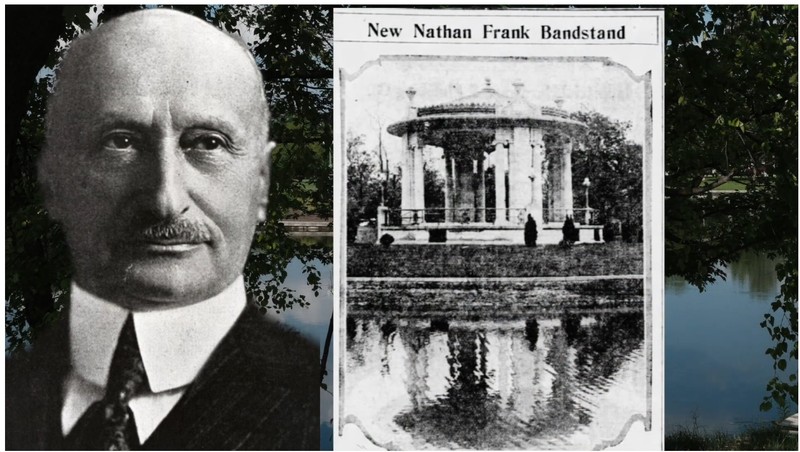
Nathan Frank also served as vice president of the commission overseeing the 1904 World's Fair in Forest Park, which led to the creation of many new structures and landscape elements within the park
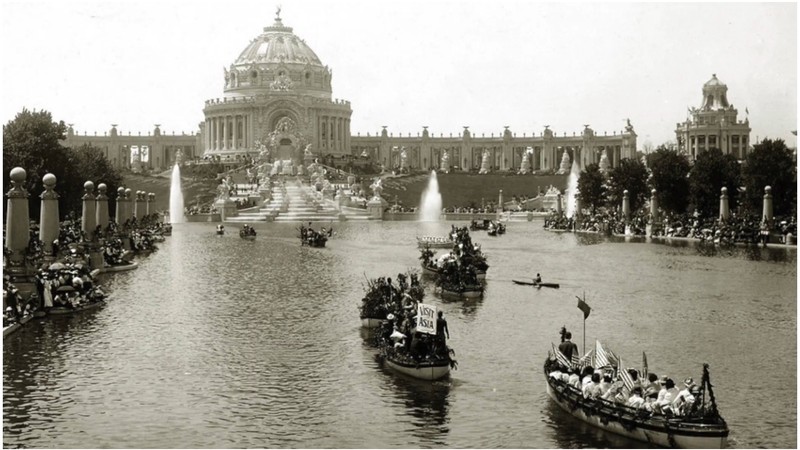
The new bandstand was dedicated in 1925 and named in honor of Nathan Frank.
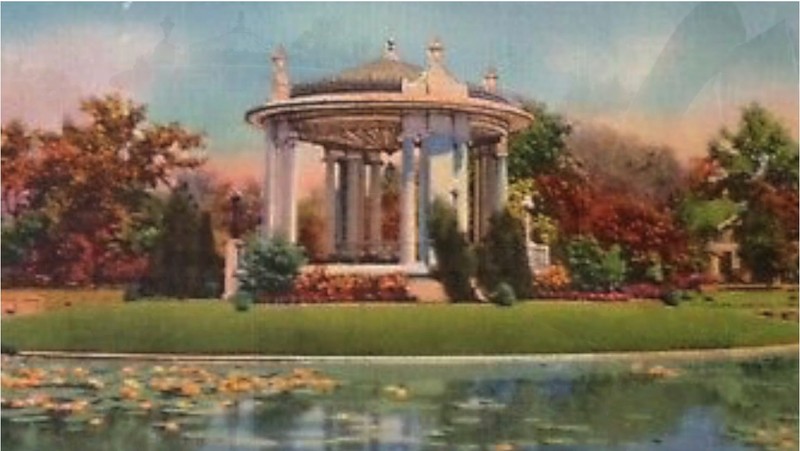
Electric lighting was added in 1980
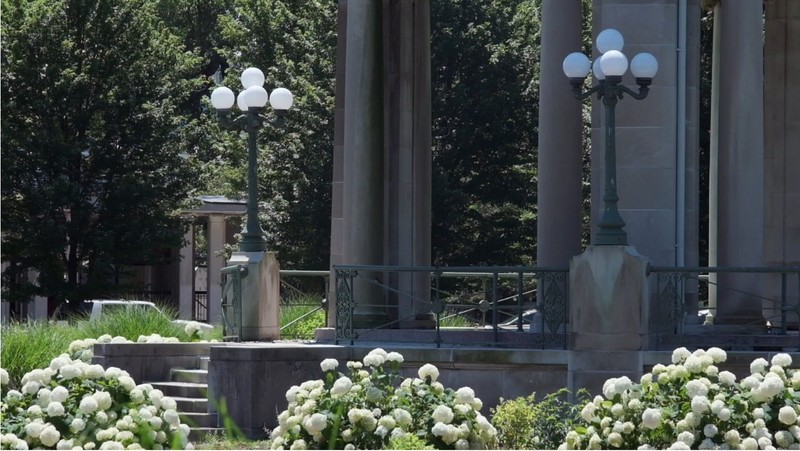
The Nathan Frank Bandstand at night
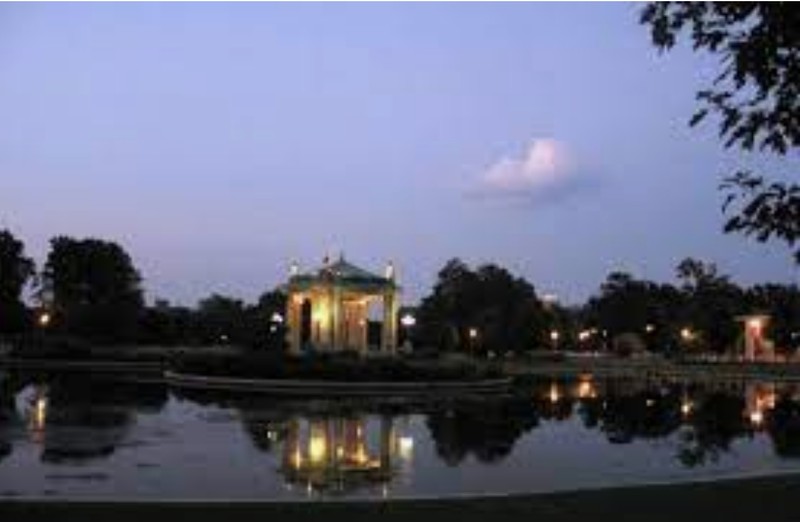
The Nathan Frank Bandstand today

The Nathan Frank Bandstand today
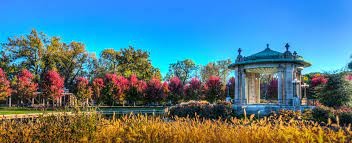
Backstory and Context
Text-to-speech Audio
The original wooden bandstand at this site was built in 1876 for the grand opening of Forest Park. Situated on an island surrounded by a moat known as Pagoda Lake, it was designed in the Syrian style, featuring a red ogee roof and decorative elements. During the 1904 World's Fair held at the park, the bandstand featured musical concerts, quickly becoming one of the most photographed structures at the event. Concerts continued to be held at the site even after the fair was over, further adding to the landmark's popularity. However, the pagoda succumbed to nature only a few decades later, due to an unexpected storm and fire. A historical marker placed near the site notes that: "In the late 1800s, the Music Pagoda drew carriages full of music lovers who parked around Pagoda Lake to listen to afternoon concerts. Said to resemble a building from One Thousand and One Arabian Nights, the Music Pagoda was of Syrian design. It was also, unfortunately, made of wood. A storm destroyed it, and the wreckage of that first bandstand burned in 1912."
It was not until the mid-1920s that a new bandstand could be constructed, when funds were provided by the St. Louis attorney and entrepreneur, Nathan Frank. Designed in the Renaissance Revival style by Heffensteller, Hirsch, and Watson, the new bandstand was built from white marble and concrete, with bronze railings and a copper roof. Its stylized arch amplified sound and enhanced acoustics across the lake. Frank, the philanthropist behind the project, was the son of German-Jewish immigrants in St. Louis, and he received a degree from Harvard University Law School in 1871. Later, he became Missouri's first Jewish member of the U.S. Congress, where he served one term beginning in 1889 in the U.S. House of Representatives. Frank was also the vice president of the commission that oversaw the planning of the 1904 World's Fair in Forest Park, leading to the construction of many new structures and landscape elements within the park. In addition, he founded the St. Louis Star newspaper, and he remained committed to several local causes throughout his lifetime. With the funds that he provided for the construction of the new music pagoda in Forest Park, the marble bandstand was completed and dedicated in 1925, with a ceremony in his honor.
However, half a century later, this relatively sturdy marble bandstand had fallen into disrepair, with its basement prone to flooding. The structure underwent several restorations beginning in 1980. Electric lighting was also added, and the ceiling was painted. Afterwards, a public picnic was held near the lake, featuring a musical concert with members of the seventy-piece U.S. Air Force Band of Mid-America. For the special occasion, band members brought their own instruments, including a piano that had to be carefully transported across the lake. Today, the bandstand still remains accessible only by boat, yet what it lacks in practicality, it makes up for through its picturesque charm. The Pagoda Circle and Nathan Park Bandstand continues to be among of the most photographed landscape elements and structures in Forest Park. The site is currently overseen through a partnership between the City of St. Louis and Forest Park Forever, while the Flora Conservancy of Forest Park maintains the plantings that surround this historic landmark.
Sources
Dwyer, Nicki. Forest Park's Nathan Frank Bandstand, Central West End Guide. August 1st 2011. Accessed April 30th 2022. https://www.nickiscentralwestendguide.com/2011/08/forest-parks-nathan-frank-bandstand/.
Engler, Ted. Nathan Frank Bandstand, Great Rivers Imaging. November 20th 2019. Accessed April 30th 2022. https://greatriversimaging.com/2019/11/20/nathan-frank-bandstand-2/.
Nathan Frank (1852 - 1931), Jewish Virtual Library. Accessed March 8th, 2023. https://www.jewishvirtuallibrary.org/nathan-frank.
Nathan Frank Memorial Bandstand, Forest Park Statues. Accessed March 8th, 2023. http://www.forestparkstatues.org/nathan-frank-memorial-bandstand.
Pagoda Circle and the Nathan Frank Bandstand, Forest Park Map. Accessed April 30th 2022. https://forestparkmap.org/pagoda-circle-and-the-nathan-frank-bandstand.
Voight, Jason. The Original Music Pagoda, Historical Marker Database. May 1st 2020. Accessed April 30th 2022. https://www.hmdb.org/m.asp?m=144817.
Reddit
Mapio
Forest Park Map
Ted Engler, Great Rivers Imaging
Historical Marker Database
Ebay
Missouri Historical Society / HEC Culture
Missouri Historical Society / HEC Culture
Ebay
Ebay
Missouri Historical Society / HEC Culture
Missouri Historical Society / HEC Culture
Missouri Historical Society / HEC Culture
HEC Culture
Nicki's Central West End Guide
HEC Culture
Photograph by Randy Allan / Forest Park Statues
